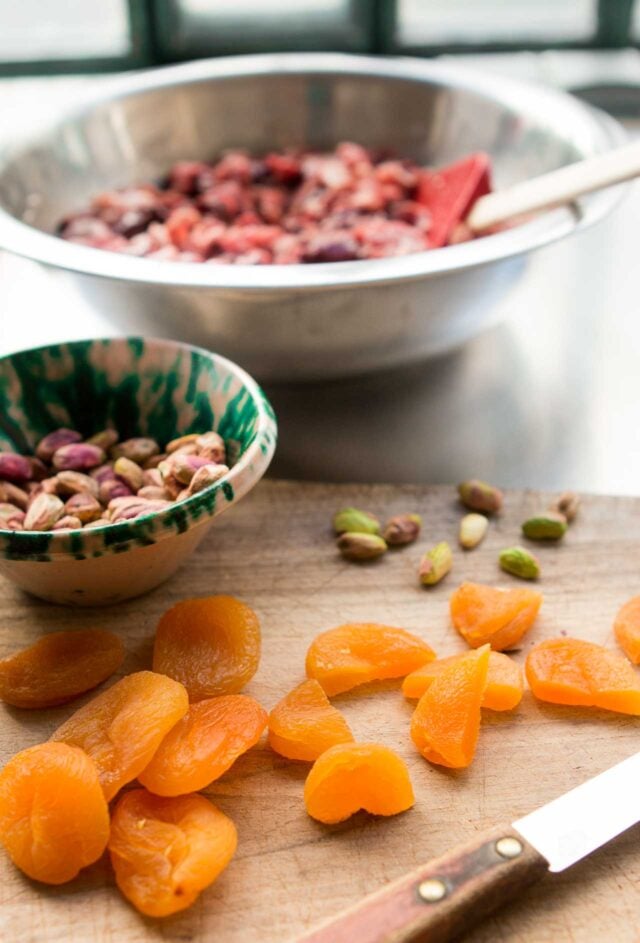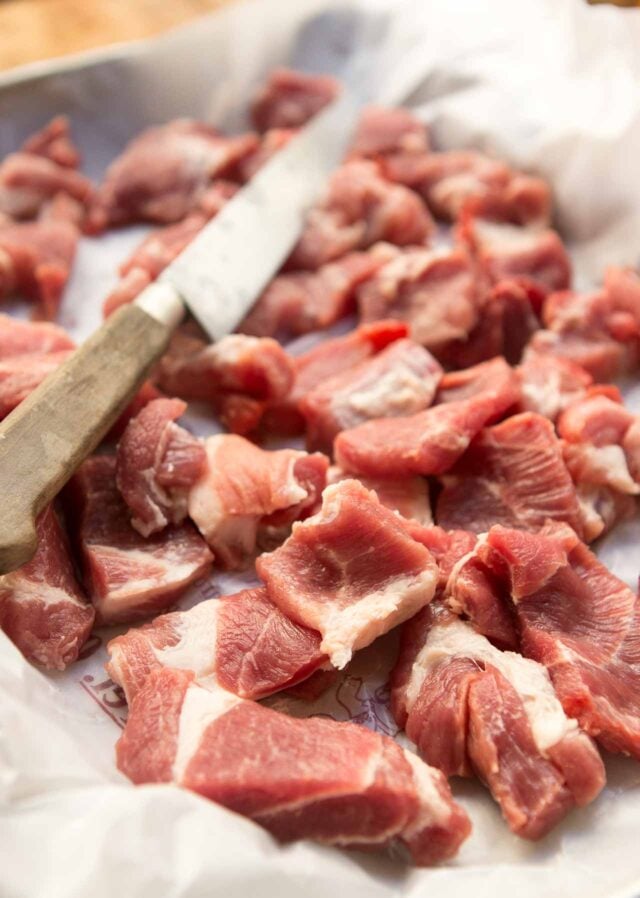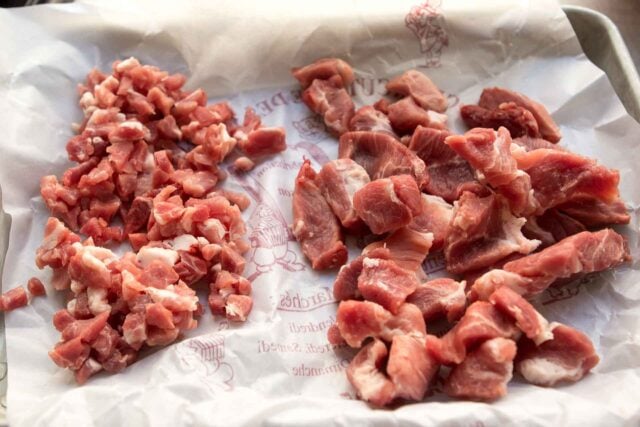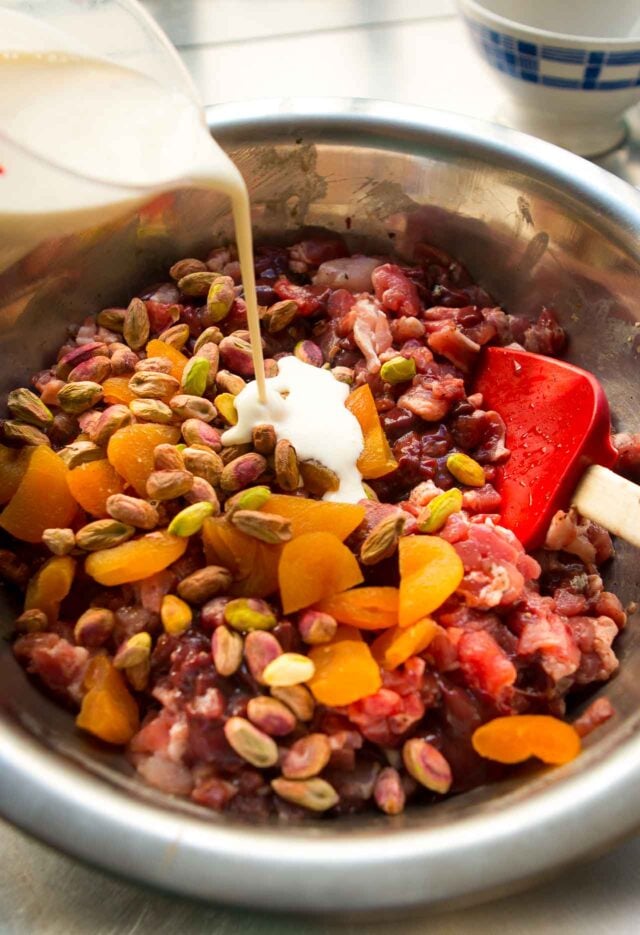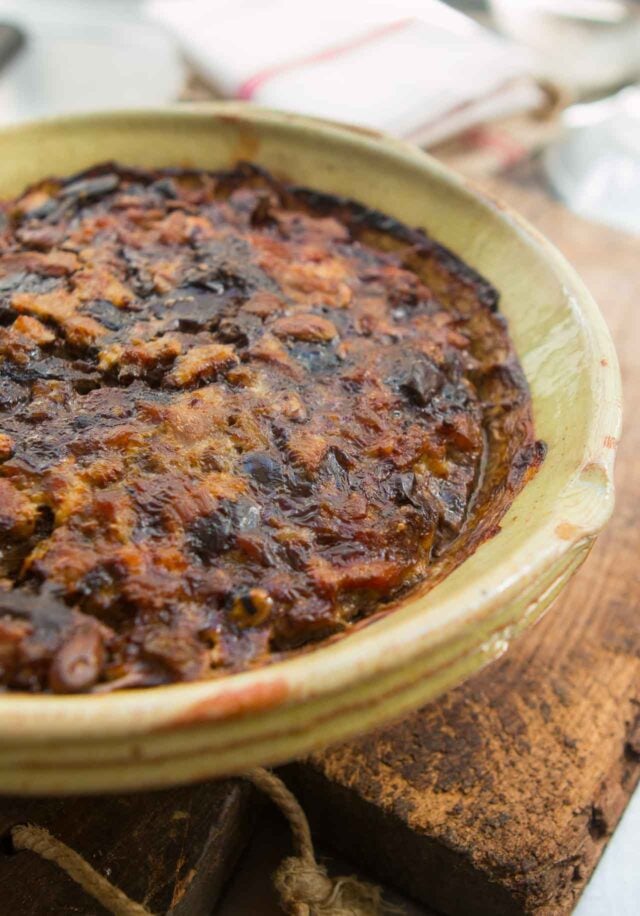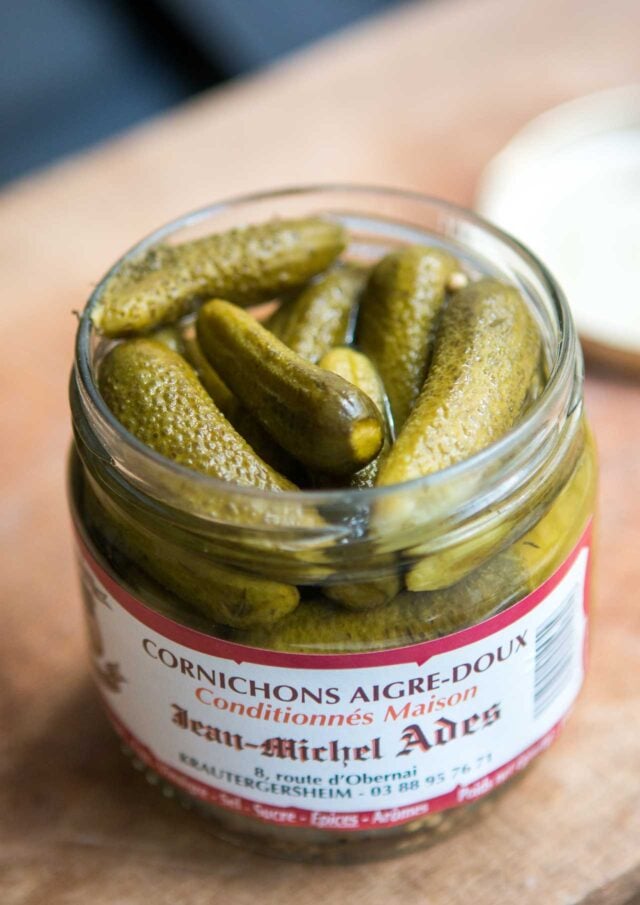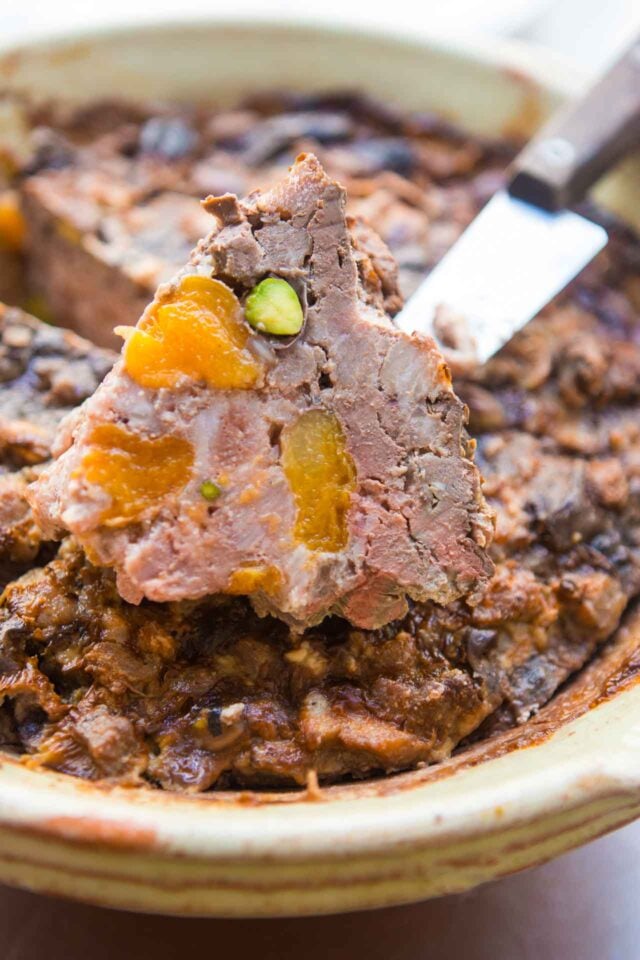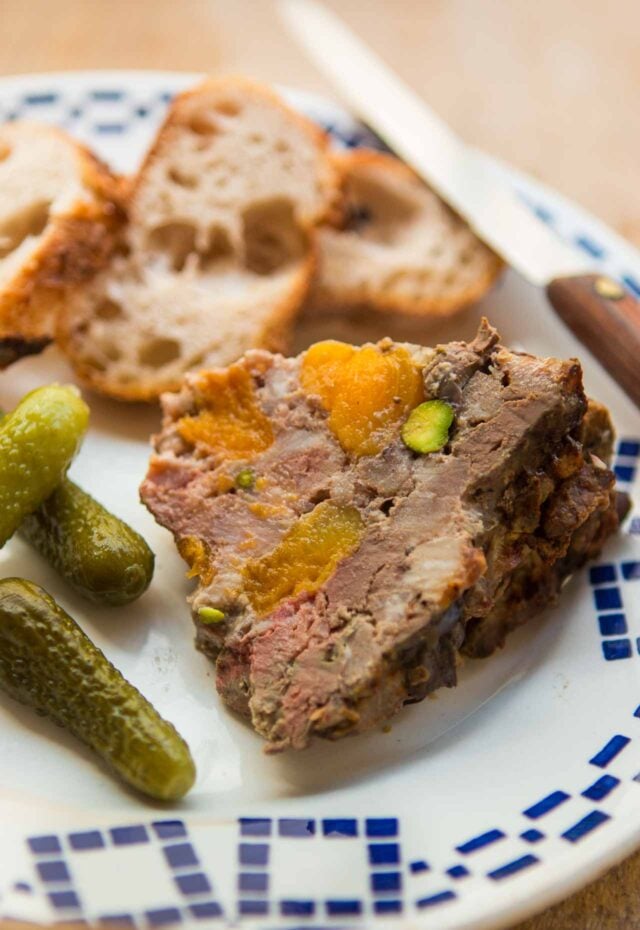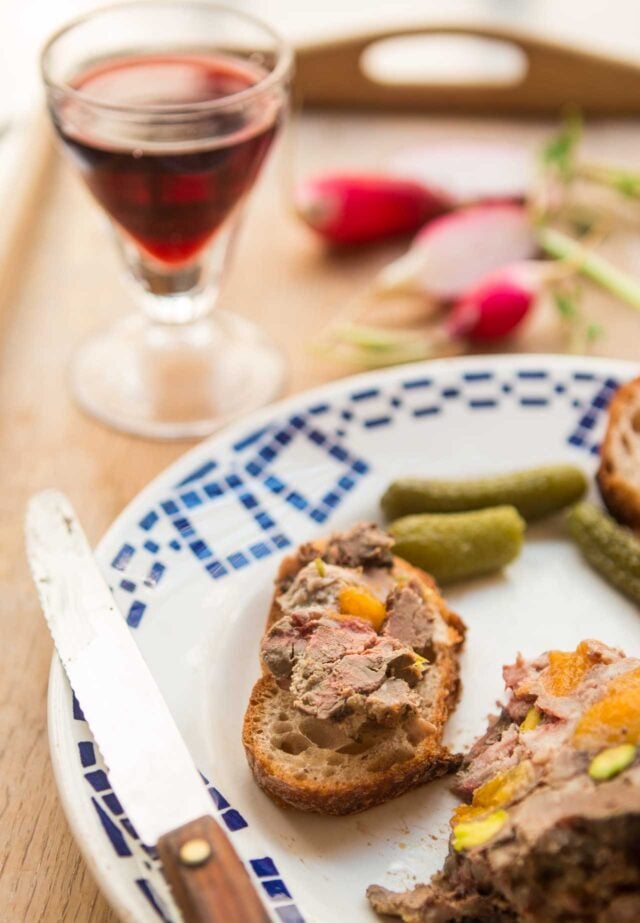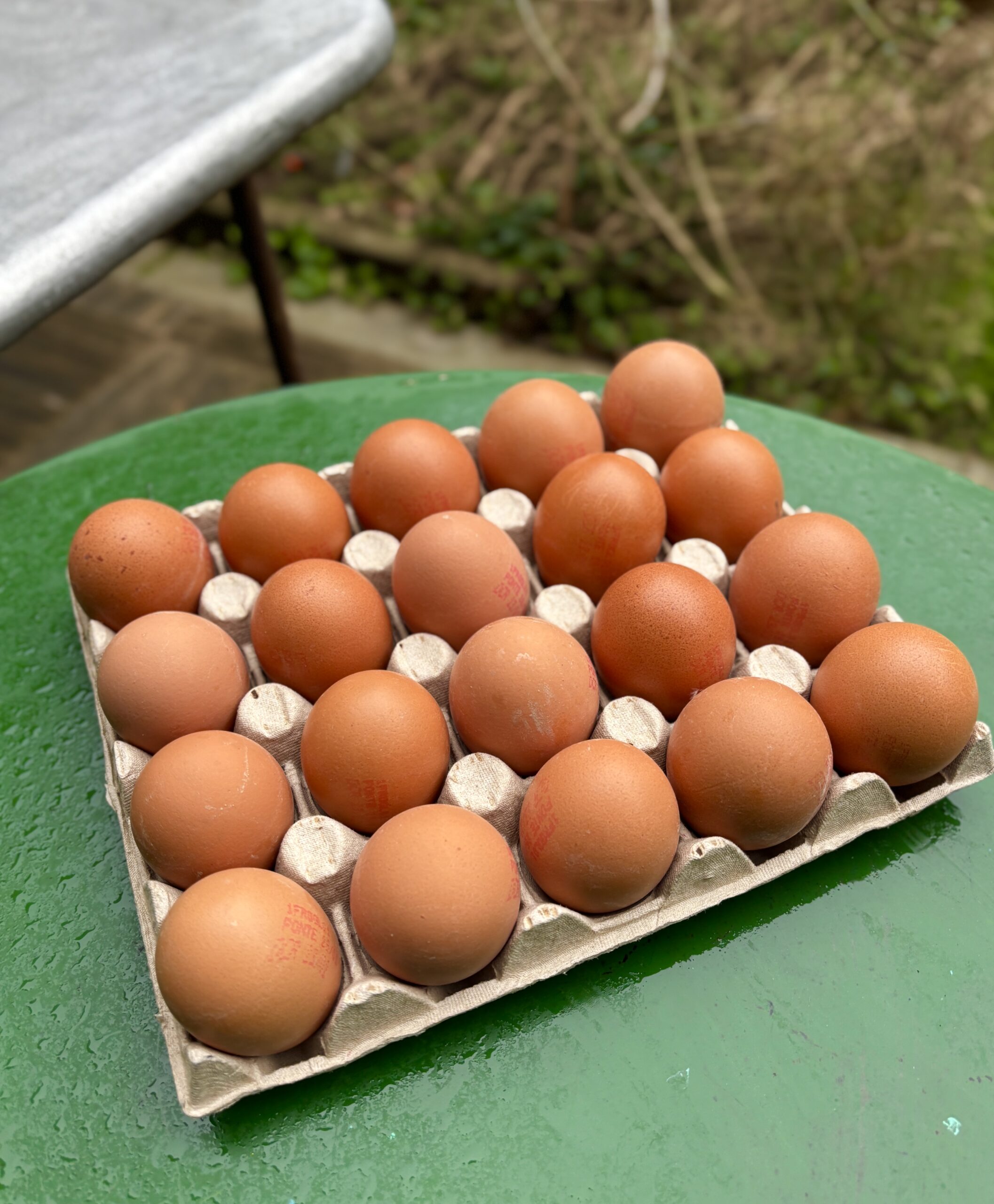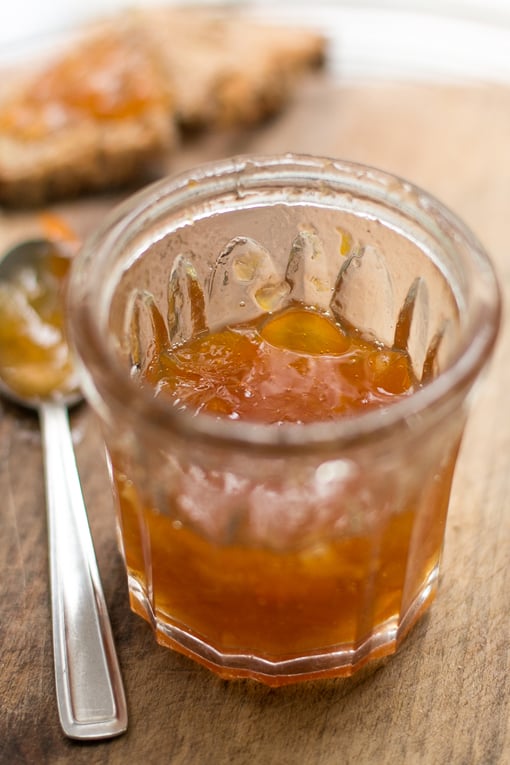La Buvette Terrine
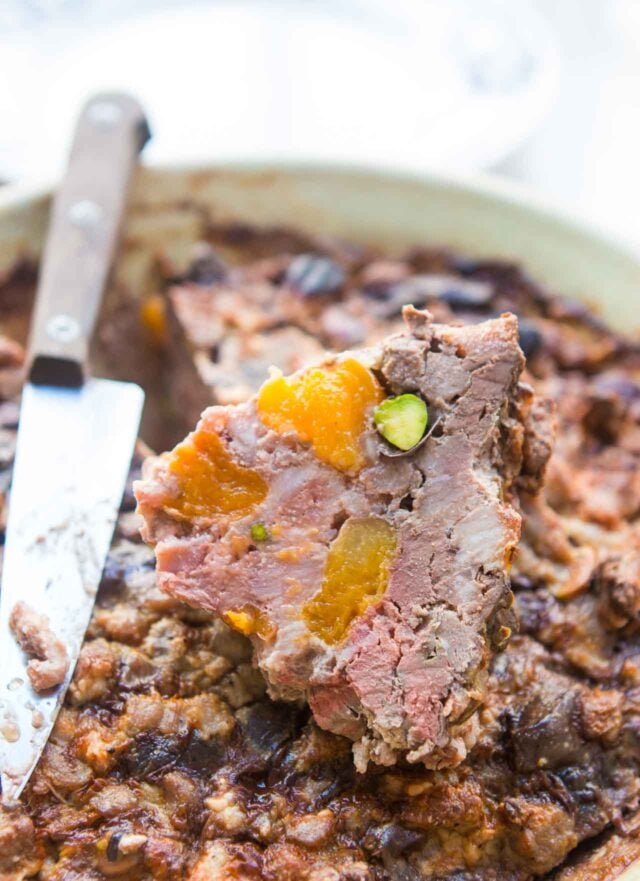
It amuses me when people talk about snooty people sitting around, leisurely eating pâté, because pâté is rustic, country fare, not considered fancy in France. While pâté can have a pastry-type crust (pâté en croûte) and some are a little fancier than others, the cousins of pâté, terrines, are truly down-to-earth. They can be baked in a special mold (you can come across them at French flea markets for around 5 bucks, like the one I used here), they can also be baked in any ovenproof bowl, which I did with this terrine. So there’s no excuse not to sit around and eat pâté, or terrine, all day. And not only is this one incredibly easy, it’s also one of the best terrines I’ve ever had.
I get anguished messages from people asking why their choux puffs fell or why something they baked doesn’t look like it just came out of a fancy French bakery. To be honest, I’ve seen flattened chouquettes at pâtisseries in France, undercooked bread at boulangeries, and here’s a shot of the terrine that inspired this one at La Bougainville restaurant in Paris, that I took at a recent dinner there. It doesn’t look like something that’s going up on the wall at the Louvre anytime soon.
No one gave a hoot that it’s wasn’t a perfect slice. (Although I’m not sure why the person next to me thought it was a good idea to point to it in the photo, since it’s pretty obvious what the subject is.) But it was absolutely delicious, and I was thrilled to see that Camille Fourmont of La Buvette included it in her book, La Buvette: Recipes and Wine Notes from Paris, written with co-author Kate Leahy.
La Buvette is a charming little bar à vin (wine bar) that, once word got out, became a hotspot for locals and visitors. I should correct that and say it’s a bar à manger, because due to local laws, in order to drink there, you need to order something to eat.
As I mentioned when I included another of Camille’s recipes in Drinking French, it’s a good thing that law exists because you don’t want to miss her wonderful, yet simple, French cooking. She will probably ban me for saying this, but her cooking is a contemporary version of cuisine de grand-mère, if your grandmother had a cool, mostly natural wine bar in Paris. She keeps things simple and familiar to the French palate; giant beans with grated citrus zest, burrata with black currants, slices of sharp Cantal cheese with fresh figs, and this terrine, which is always on the menu.
Camille got very excited when I sent her a picture of my finished terrine, exclaiming something along the lines of – Ooh..it looks so chunky. Just how I like it! The recipe in her book called for using meat grinder to coarsely grind the meat. I don’t have one and like a dope, I didn’t ask the butcher if he could grind it coarsely for me when I bought the meat. So once I got home, I hand-chopped the meat myself.
If you can make meatloaf, you can make a terrine. It took about 20 minutes to hand chop all the meat but if you have a butcher who will grind it coarsely for you – and have the sense to ask – that’s one way to go. Or you can meet me (and Camille) halfway and if you don’t have a local butcher, buy regular ground pork, then hand chop the livers and pork belly so there are still chunks of meat, but you’ve shaved a few minutes off the preparation time by using some ground meat.
I wanted to hew closely to the recipe which said a glass or clay terrine mold was preferable to a metal one, but I couldn’t find my earthenware terrine mold and didn’t know if it was okay to use a metal one or not. (In the terrine recipe in My Paris Kitchen, I use a metal one with no problem.) But in spite of Romain’s eye-rolling to the contrary, I am good at following orders so went with a small cassoulet bowl.
The second time I made it, I did make it in a metal loaf pan, and it came out just fine. Because my bowl was wider, I increased the cooking time, which I made a note in the headnote about. No matter what you bake it in, an instant-read thermometer takes all of the guesswork out of letting you know when it’s done, although Camille and Kate say it’s done when a knife plunged into the center reveals only clear juices.
A good terrine needs nothing more than a few cornichons or pickles served on the side. I got a reproach at a wine bar in Paris shortly after I arrived when I asked for mustard. The waiter snapped back, “Our charcuterie is too good to put mustard on!” So mustard might not be the best choice, but I wouldn’t turn my nose up at a fruit chutney if it was on the same plate. Some good bread, however, is essential, and wine of course.
[UPDATE: There were a number of questions people had about this recipe, posted in the comments, so I made a video showing the steps of making it, which you can watch here on Instagram.]
La Buvette Terrine
- 12 ounces (340g) chicken livers, trimmed of any sinew, cut into 1-inch (3cm) pieces
- 1 pound (450g) boneless pork shoulder, cut into 1/2-inch (1.5cm) pieces, or coarsely ground (see headnote)
- 8 ounces (225g) skinless fatback or pork belly, cut into 1/2-inch (1.5cm) pieces, or coarsely ground
- 3 tablespoons cognac or Armagnac, or another brandy
- 1 tablespoon kosher or sea salt
- 1 teaspoon freshly-ground black pepper
- 1/4 teaspoon pimente d'Espelette pepper, or paprika (sweet or smoked)
- 2/3 cup (160ml) heavy cream
- 10 dried apricots, cut in half or quarters
- 1/4 cup (50g) shelled pistachios, preferably unsalted
- Mix together the pieces of chicken livers, pork shoulder, fatback or pork belly, Cognac, salt, black pepper, and pimente d'Espelette in a large bowl. Cover and refrigerate for 12 hours, or overnight.
- Preheat the oven to 375ºF (190ºC.) Have a 9 x 5 (23x18cm) rectangular loaf pan or terrine mold ready, or an ovenproof bowl that will hold close to 6- to 7-cups (1.5-1.7L) of mixture. Place the pan or mold in a larger pan that you will use to create a water bath to bake the terrine in.
- Mix the heavy cream, apricots and pistachios into the meat mixture. Transfer the mixture to the baking pan or mold, smooth the top, and cover snugly with foil. Add hot water to the larger pan the terrine pan or mold is sitting in, so it's coming up halfway up the sides of the pan or mold. Bake for 35 minutes, then remove the foil and bake another 35 minutes, or longer, until the terrine is done. (My terrine baked in a clay bowl took longer to bake than in the metal loaf pan I used the second time I made this; after removing the foil, mine in the bowl took an additional 65 minutes. If using a loaf pan or rectangular pâté or terrine mold, it should be done after removing the foil and baking it for the remaining 35 minutes.) You can verify the temperature with an instant-read thermometer, which should read 150-155ºF (66-68ºC) when done. The temperature of the terrine should continue to rise to 165ºF (72ºC), considered a safe temperature, after you take it out of the oven.)
- If you don't have an instant-read thermometer, bake the terrine until the juices run clear when you poke a sharp knife down into the center.
- Remove the terrine from the oven and the water bath and let cool on a wire rack completely. When cool, cover and refrigerate for at least 24 hours before slicing and serving.
